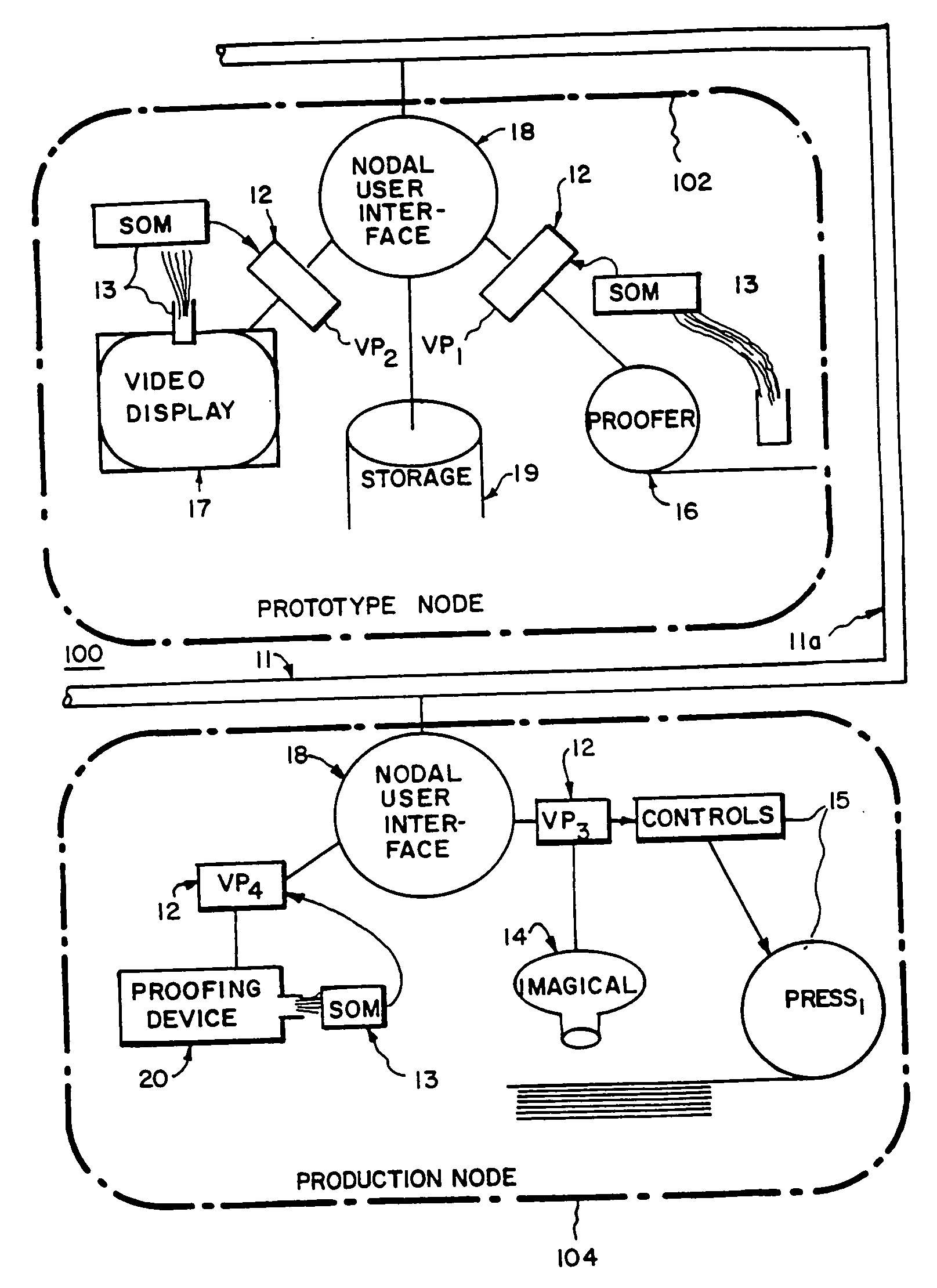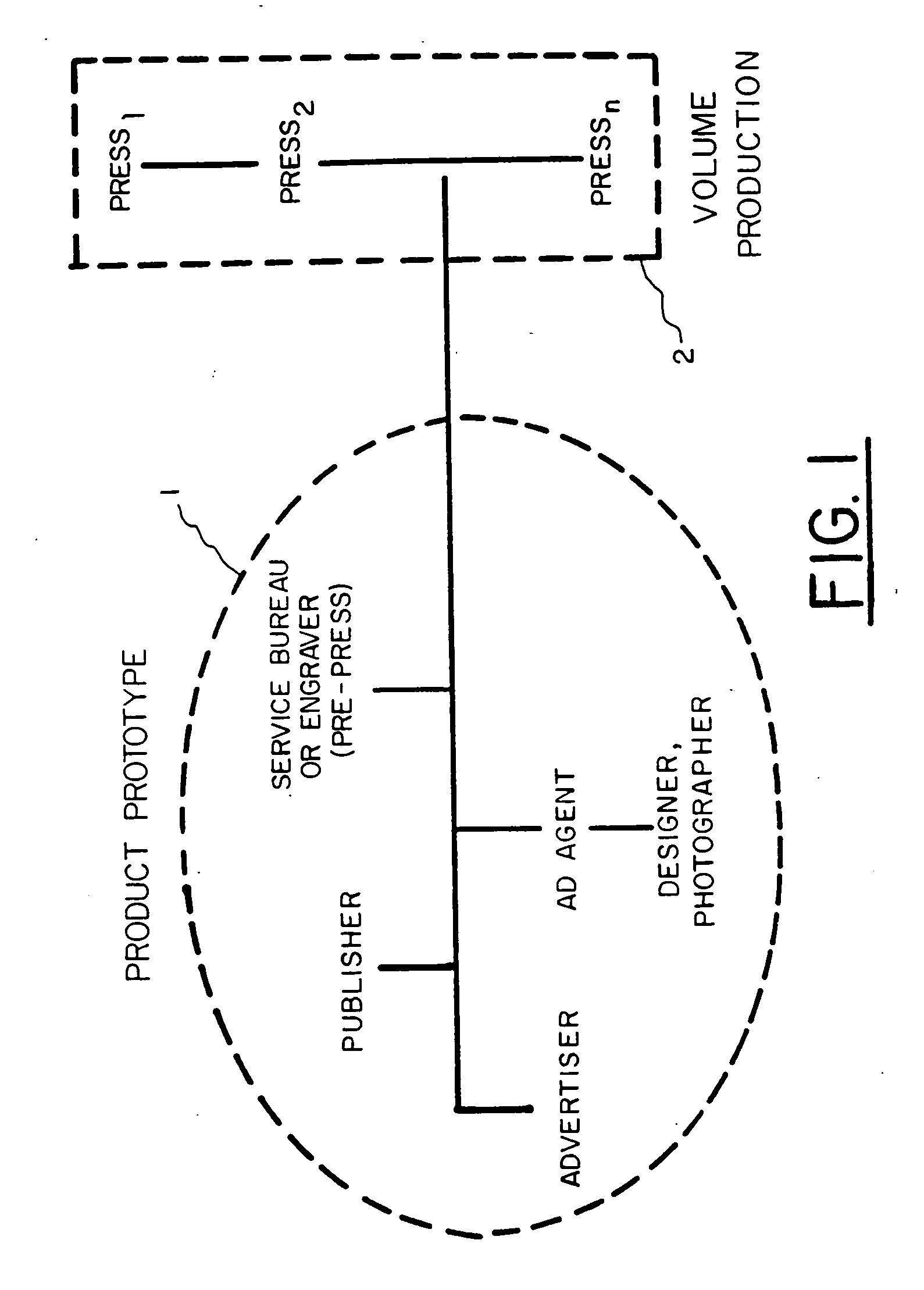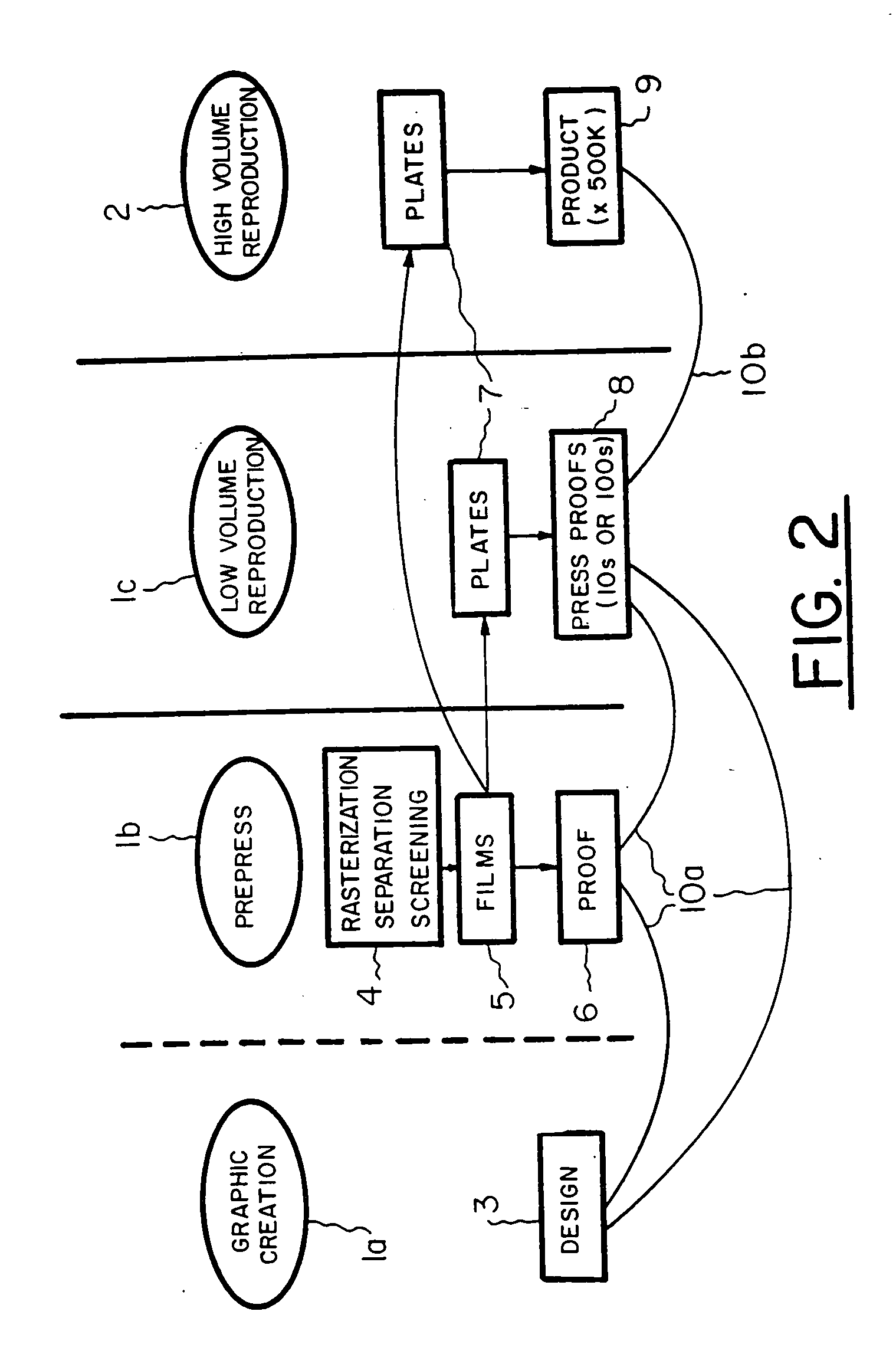System for distributing and controlling color reproduction at multiple sites
a color reproduction and multi-site technology, applied in the direction of color signal processing circuits, image enhancement, optical radiation measurement, etc., can solve the problems of increasing the difficulty of maintaining uniform quality across the network of production sites, the overall product cost may decrease with shipping expense, and analogous problems also arise. to achieve the effect of accurate provision
- Summary
- Abstract
- Description
- Claims
- Application Information
AI Technical Summary
Benefits of technology
Problems solved by technology
Method used
Image
Examples
Embodiment Construction
[0117] Referring to FIG. 3A, the system 100 of the present invention is shown. System 100 has a network 11 having a pipe 11a through which multiple nodes (or sites) of network 11 can be linked for data flow between nodes. Network 11 may be a telecommunication network. WAN, LAN (with a server) or Internet based. Two types of nodes are present in system 100, prototype nodes 102 and production nodes 104. For purposes of illustration, only a general node of each type is shown in FIG. 3A, however there may be multiple nodes of each type in network 11. Network 11 is modifiable to be configured by any one node to connect any two or more nodes in system 100. Each node has a micro-processor based computer, with a network communication device, such as a modem, which is part of a system having a rendering device for producing color reproduction and color measuring instrument (CMI) for measuring the color output of the rendering device. The computer may be a programmable general purpose compute...
PUM
 Login to View More
Login to View More Abstract
Description
Claims
Application Information
 Login to View More
Login to View More - R&D
- Intellectual Property
- Life Sciences
- Materials
- Tech Scout
- Unparalleled Data Quality
- Higher Quality Content
- 60% Fewer Hallucinations
Browse by: Latest US Patents, China's latest patents, Technical Efficacy Thesaurus, Application Domain, Technology Topic, Popular Technical Reports.
© 2025 PatSnap. All rights reserved.Legal|Privacy policy|Modern Slavery Act Transparency Statement|Sitemap|About US| Contact US: help@patsnap.com



